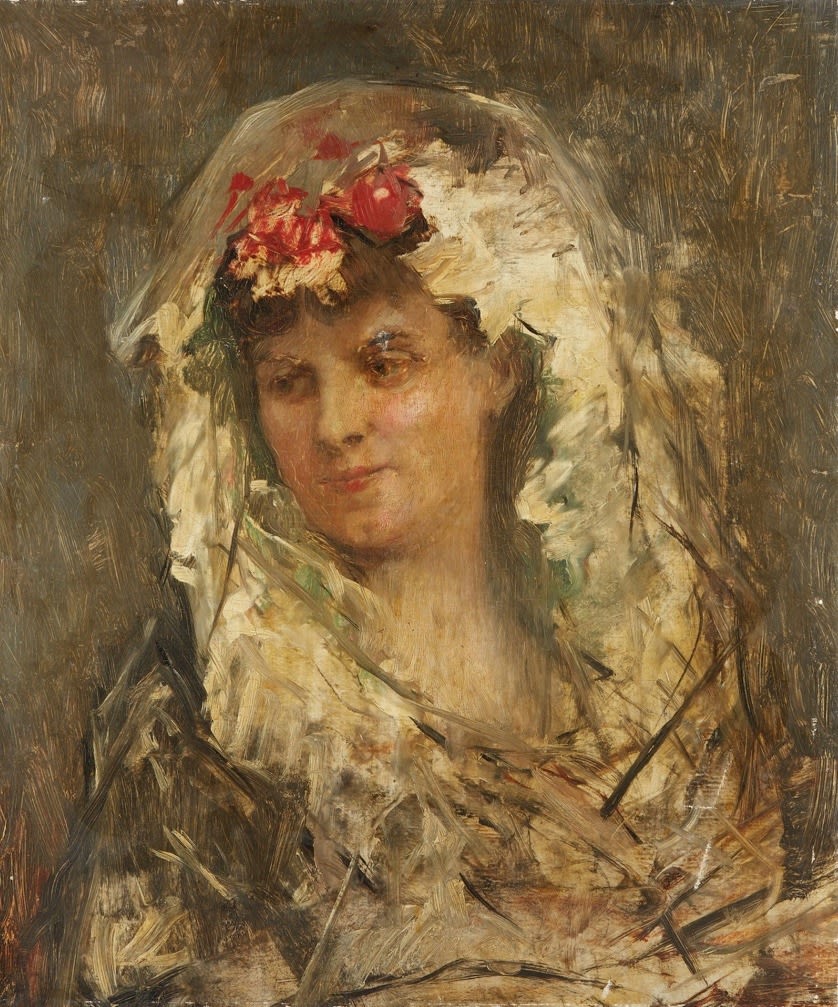Spanish School, Circa 1900
55 x 46 cm
Provenance
Private collection, FranceThis refined portrait of a Spanish woman in traditional maja dress belongs to the elegant society portraiture of the late 19th to early 20th century, while deliberately subverting some of its visual conventions. Though the attire might evoke the popular figures celebrated by Lucas Velázquez, both the technique and the posture of the sitter point in another direction.
Professor Andrew Ginger rules out an attribution to Lucas Velázquez, noting instead the restrained palette, the dynamic, sweeping brushwork, and the fusion of foreground and background, which recall the style of Giovanni Boldini. Yet, unlike the overtly sensual imagery common to many 19th-century portrayals of majas, this painting offers a more modest, sober, and introspective vision of femininity. The sitter’s gaze is gently averted, her expression serene, her face delicately modelled with subtle light—traits that evoke admiration without flirtation.
While the work may fall under the influence of Boldini or of his reception in Spain—particularly among artists such as Raimundo de Madrazo or Lucas Villaamil—it stands apart in its affirmation of a distinctly modern and cosmopolitan female identity, grounded in Spanish tradition. The elision of space, the criss-crossing strokes, and the nuanced, nearly monochromatic tones lend the composition a painterly energy that transcends anecdotal genre scenes.
The painting thus embodies a unique vision of Spanish womanhood at the turn of the century: elegant yet restrained, national yet worldly, and painted with remarkable sensitivity and technical flair.
Join our mailing list
Join our mailing list to stay informed about our latest discoveries and upcoming exhibitions (once a month).
* denotes required fields
We will process the personal data you have supplied in accordance with our privacy policy (available on request). You can unsubscribe or change your preferences at any time by clicking the link in our emails.
